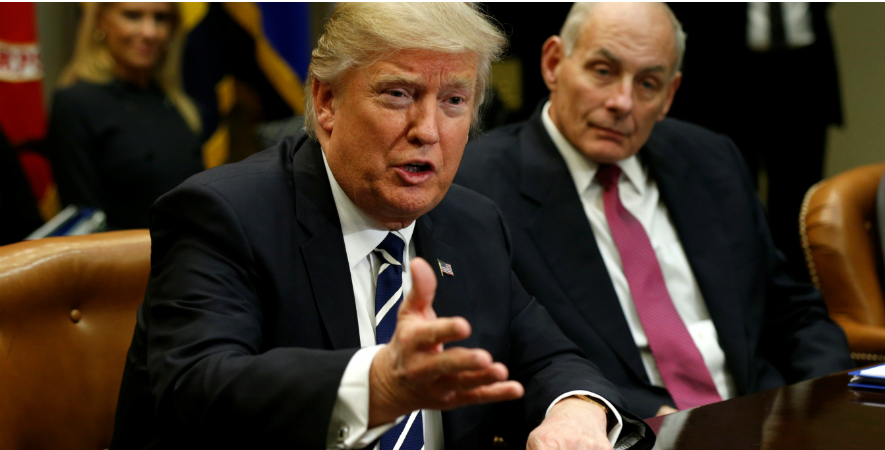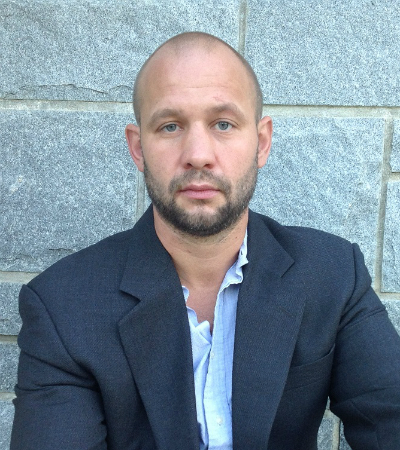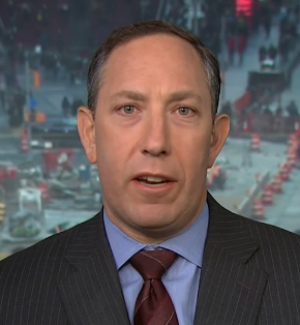Lessons From a Year in the CVE Trenches
Editor’s Note: Government programs to combat violent extremism get far more media attention than resources, in part because it is not clear how to make these programs stronger. Jesse Morton, a former jihadist, and Mitchell Silber, the former NYPD director of intelligence, are working together to combat extremism. Drawing on their experience, they propose a series of practical steps the U.S. government could take to become more effective, focusing on the pre-criminal stage and recidivism, as well as proposing a more coherent bureaucratic division of labor.

Published by The Lawfare Institute
in Cooperation With

Editor’s Note: Government programs to combat violent extremism get far more media attention than resources, in part because it is not clear how to make these programs stronger. Jesse Morton, a former jihadist, and Mitchell Silber, the former NYPD director of intelligence, are working together to combat extremism. Drawing on their experience, they propose a series of practical steps the U.S. government could take to become more effective, focusing on the pre-criminal stage and recidivism, as well as proposing a more coherent bureaucratic division of labor.
Daniel Byman
***
A year ago, we, a former jihadi propagandist and the former director of intelligence at the New York City Police Department, launched something brand new in the United States—a homegrown nonprofit nongovernmental organization (NGO) dedicated to preventing and countering violent extremism (PVE/CVE). So far, we have focused on jihadist extremism, but our plan is to expand to right-wing and other potential terrorists of all political stripes. It has been an interesting and challenging year that has afforded us a unique perspective. Our NGO is now transitioning from research papers and analysis to implementation of programming. This work is guided by some key principles, particularly a focus on early intervention and the prevention of recidivism, that should guide increased efforts by the U.S. government.
Our primary concern is domestic extremism, which is important to distinguish from international activity. While the U.S. government has annually allocated millions of dollars (as much as $16 million in 2016, rising to $32 million in 2017) to the State Department’s Global Engagement Center, which funds PVE/CVE initiatives abroad, an insignificant amount has been invested in preventing violent extremism at home. After a year of working with different components of the U.S. government, academics, communities and PVE/CVE practitioners from around the world, we are more convinced than ever that setting up a domestic PVE/CVE architecture, with adequate funding and with some type of “quarterback” in the United States, is necessary and overdue.
A Brief History of PVE/CVE in the United States
Extremist movements active in the homeland, not unlike insurgencies abroad, are marked by ideological consistency, tactical fluidity and vacillations in strength, making them difficult for the federal government to counter. Effective terrorism prevention requires government commitment coupled with the ability to be nimble and adjust as circumstances change. However, PVE/CVE policy in the United States seems to hold policymakers’ attention only in the immediate wake of deadly attacks. This dynamic has historically impeded the development of effective solutions.
The first U.S. iteration of PVE/CVE was focused predominately on al-Qaeda-inspired jihadism. In December 2011, President Obama released a strategic implementation plan for “Empowering Local Partners to Prevent Violent Extremism in the United States.” But the launch occurred in the context of the U.S. withdrawal from Iraq; an Arab Spring that suggested a wave of democratization in the Middle East; and the killing of Osama bin Laden in Abbottabad, which seemed to herald the demise of the world’s most dangerous jihadist group. It appeared that the war on terror was winding down, and momentum on CVE soon slowed.
In fact, PVE/CVE was hardly mentioned after the 2011 announcement and received no funding of any consequence from the federal government. That is, until bombs went off at the finish line of the Boston Marathon on April 15, 2013, in a terrorist attack carried out by homegrown violent extremists (HVEs). After that attack, calls grew louder for some type of domestic initiative to counter jihadist radicalization. The Obama administration referenced its 2011 plan to deflect criticism, but evidence of any substantive alteration of the status quo was hard to find.
In July 2014, ISIS stormed the world stage seemingly from nowhere. There was a rush to respond, but the United States was hardly prepared for the breadth and depth of wannabe terrorists who gravitated to the so-called caliphate. A well-meaning but generally pro forma White House CVE summit took place in February 2015, but it wasn’t until December 2016 that the Department of Homeland Security (DHS) announced $10 million in appropriated funding for a “CVE initiative.” By the end of the Obama administration, pilot programs had been launched in three regional metropolitan areas—Boston, Los Angeles, and the Twin Cities of Minneapolis and St. Paul—but had run their course with limited and uneven results.
The Trump administration signaled that it intended to disregard PVE/CVE as soon as it entered office. Within days of Trump’s inauguration, Reuters reported that the administration was developing a new policy to abandon the “countering violent extremism” nomenclature and replace it with the much narrower and ideologically loaded phrase “countering radical Islamic extremism.” The administration also cut federal resources for preventing extremist violence, did not renew the one-time $10 million local grants program and significantly downsized the relevant DHS office. The general consensus was that the new administration would have little to do with “soft measures” of counterterrorism. Then, in October 2018, the administration surprisingly acknowledged “terrorism prevention” in its National Security Strategy for Counterterrorism, stating that 17 years into the war on terror the United States had “not developed a preventative architecture to thwart terrorist radicalization and recruitment.”
This is the context in which we entered the arena. It remains unclear whether new or sustained funding will continue for domestic CVE initiatives when the DHS grants expire in August. We believe that bipartisan commitment to PVE/CVE matched by steady support for partnerships with NGOs is crucial for matching the adjustments and mutations of extremist movements as they occur.
Where the U.S. Government Needs to Invest
A 2019 DHS-contracted study by RAND Corp. on the state of terrorism prevention in the United States found “some successes” but emphasized that achievements from the DHS grants were “fragile because of concerns about whether programs would be sustained.” The research revealed “major gaps” in five areas: “counter-messaging,” “preventative community education and risk factor reduction,” “referral promotion,” “intervention,” and “recidivism reduction.” The most effective means of addressing these gaps, the study concluded, would be support for state, local, NGO and private organizations.
To address these gaps, the U.S. government should learn from the real-world experiences of our allies. The onset of PVE/CVE as a field of practice traces back to the aftermath of the London transit system bombings on July 7, 2005. Since then, there has been a shift from concentrating on the utilization of “moderate” voices to “counter-message” underlying (Islamist) ideologies to one more focused on the utilization of individual interventions, both as an alternative to investigation and interdiction and as a mechanism for recidivism reduction.
We believe that the U.S. government should place its primary focus on two areas: intervention and recidivism reduction. While supporting initiatives that counter extremist messages is important, the emphasis should be on the space between cognitive radicalization and the mobilization to violence. It has the potential to be the most targeted, efficient and results-oriented place to invest resources. Law enforcement has finite resources to surveil and monitor individuals of concern, and having an alternative mechanism would provide some of these individuals an off-ramp that does not involve arrest. All too often, individuals who have gone on to commit acts of terrorism were on law enforcement’s radar but were not monitored sufficiently closely because law enforcement and intelligence agencies were stretched too thin. In many of these cases, there was no alternative to the watching and waiting of an investigation because the subjects hadn’t broken any legal statute.
Pre-criminal Intervention. Developing a pre-criminal intervention option, whereby social workers, mental health professionals and former extremists would be mobilized to channel the individual in another direction, would add a useful tool to the counterterrorism toolbox and provide an alternative to the investigate-until-arrest dynamic. This approach would likely face some resistance. Law enforcement will have reservations about not arresting individuals as soon as they are about to cross into criminality. However, an intervention does not preclude interdiction. Investigation and intervention can run on two parallel tracks simultaneously, in spite of the inherent tension between them.
To achieve this, the government should also adopt clear and transparent standards for risk assessment and uniform standards for training and certifying interventionists in PVE/CVE techniques in order to build capacity. The FBI’s Behavioral Analysis Unit could take the lead on this. Only the counterterrorism community has access to the necessary mix of open-source and private intelligence to accurately identify those demonstrating enhanced commitment to violence. Such an approach has proved particularly successful in Britain, where hundreds of interventionists have been cleared for work with the U.K. government’s CONTEST program.
Programs for this intervention-based approach must also emphasize community-based partnerships. There must be a mechanism for participation by local actors who have expertise to work with those referred. Britain has pioneered this type of pre-criminal intervention with its Channel program, an initiative that provides a multiagency approach to support people vulnerable to being drawn into terrorism. Individuals assessed by the police to be at risk of radicalization are referred to a local multiagency panel, including representatives from education and health services, who meet to discuss the referral, assess the extent of the vulnerability and decide on a tailored package of support to be offered to the individual. Reviews are conducted on a monthly basis to monitor the individual’s progress and determine appropriate next steps.
Recidivism Reduction. The importance of partnerships with community actors is particularly relevant to recidivism reduction, an important area of intervention-oriented activity highlighted in the RAND review. This need is expected to increase, and little has been done to prepare for the terrorism-related offenders set to return to the streets in coming years.
The U.S. government has prosecuted more than 400 jihadist terrorists since 9/11. While several of those convicted will spend the rest of their lives in prison, the overwhelming majority will one day reenter society. In fact, over the next five years, nearly a quarter of these convicts will complete their terms of imprisonment. Moreover, since the average age of those charged with ISIS-related crimes is only 27, they will be released back into American society with much of their lives ahead of them. These releases are already occurring—John Walker Lindh was released from prison in May after serving 17 years of his 20-year sentence—but the government is underprepared for what should come next.
We’ve studied this in detail and published a report late last year with thorough recommendations for establishing government partnerships with community-led NGOs for the development of a piloted post-release reentry program. We’ve even started to work with several releasees. Community partnerships like the ones we’re working on are crucial. We know that both extremists and counterterrorism practitioners learn by doing. A bottom-up approach, based on experience gained “in the field” generates knowledge through tinkering and trial-and-error. Yet, in order to decentralize, a government agency must take the lead.
Government Leadership. In 2015, Rep. Mike McCaul, head of the House homeland security committee, introduced a bill that suggested creating a deputy assistant secretary for countering violent extremism within DHS to lead and coordinate government CVE efforts. While we agree that there needs to be a “quarterback” for the whole-of-government effort, we believe that it would be more effective to place this “CVE czar” in the Department of Justice. If pre-criminal intervention and recidivism reduction programs are implemented, Justice Department agencies would have to fill vital functional roles, including the U.S. Attorneys’ Offices, the FBI, the Federal Bureau of Prisons, and U.S. Probation and Pretrial Services. Many of these offices are already involved in CVE efforts.
The U.S. government should act now, while there is a relative lull in the threat from foreign terrorist organizations and before domestic threats gain more traction. As the 2019 RAND study noted, “In light of expenditures in the billions of dollars devoted to the rest of the nation’s counterterrorism efforts, increases in terrorism prevention funding would not only put U.S. efforts in this policy area more in line with other nations, but also appear likely to pay off, even if they make only modest reductions in the burden of counterterrorism investigations on law enforcement or in numbers of attempted terrorist attacks.”
Were the federal government to make a long-term commitment and consistently fund new initiatives and work with NGOs, we would be better prepared for the next wave of extremist violence from whichever direction and ideology it comes. The threat posed by violent extremism, like any other public health concern, is better addressed preventively. It is time for action to trump rhetoric.


